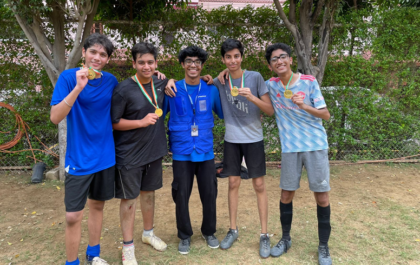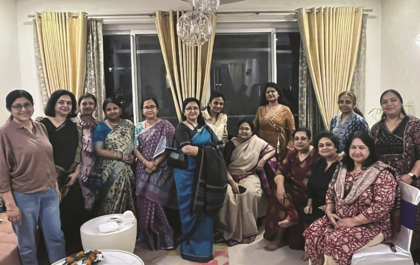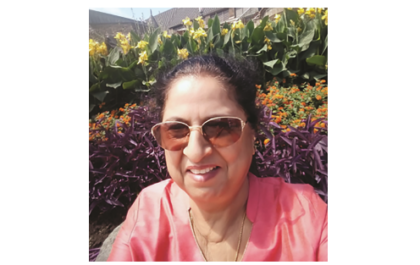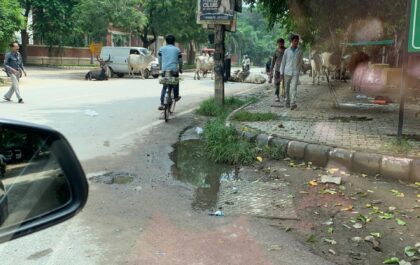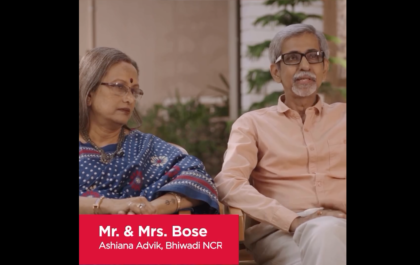Durga Puja is not just a Puja for Bengalis, it is a celebration of life. We started doing Durga Puja last year as it was one of my dad’s unfulfilled dreams. This year we continued the celebration with equal or more enthusiasm and excitement.
Every day the puja used to happen with utmost devotion. Family and friends join us from near and far for the puja. To make it a grand celebration.
Every day there would be many visitors for darshan. Around 50-60 people would eat bhog every day. My mom prepares this bhog following all the rituals. She would cook for 50+ people for 3 days consecutively – Saptami Ashtami & Navami.. Vijaya Dashami blog is always limited to the family.
The Puja begins from Shashti by inviting Maa Durga home – the rituals are called Bodhan Amantran and Adhibaash.
Saptami morning. A Banana plant is worshipped as a Goddess form. It would be given a bath after turmeric and oil application and then will be dressed up like a goddess and placed next to the Idol. From Saptami onwards Pushpanjali, Bhog etc rituals happen.
Every day there were around 25-30 people for Pushpanjali. And 50+ people would get bhog prepared by mom. Everyday morning and evening there will be a special aarti at the end of Puja to conclude the puja.
This Aarti stretches for 30 minutes and in this duration, the priest would do multiple changes of the article with which he would perform aarti- it begins with Panch Pradeep followed by kapoor fire.. then gradually – dhoop, jal shankh, flowers, Gamcha, fan and chamar (a fan made from chamri gai or yak tai hair) and ends with water. The priest uses one hand to play the bell and the other hand will be doing the aarti in the rhythm of the dhaak that is being played during this time. Dhaak rhythms change as he changes the object to do the aarti and accordingly changes his hand movements. Ladies will blow the conch and give ulu dhwani during aarti. It’s not as easy to continue this Aarti for that long time as it looks or sounds- the two hands doing two different things constantly for 30 min – it’s really difficult -the sound of dhaak helps them perform this – hence they would want that sound really loud during this time – to be able to perform aarti properly.
The environment during aarti is so divine and I have seen the priest often in a different mental state. One of the most beautiful divine experiences.
Ashtami pushpanjali is the most popular one hence there were a maximum number of guests on this day. While Ashtami evening Sandhi Puja – which is considered the most auspicious Puja in Durga Puja – had many enthusiastic guests who wanted to see this puja. During Sandhi Puja we give Maa Durga 108 Lotus and light 108 diyas. Nine big fruits and nine sweets are offered to the goddess along with a special bhog which comprises different savoury and sweet delicacies. It is said that Sandhi Puja is performed in Debi Durga’s Chamunda form. It is said that she is in the most potent form during this puja. This puja happens for 48 minutes and all family members fast for the same so that they’re able to perform the puja and join for sandhi Puja Pushpanjali and light a diya with a wish.
The next day, which is Durga Navami, after the pushpanjali and bhog, a special homa is performed to complete the Puja. On the next day or Vijaya Dashami we will be bidding her goodbye by doing Visarjan of Pratima / goddess idol.
Visarjan signifies non-permanence, the temporary image dissolving and merging into nature and losing its physical identity. But the Goddess is as permanent as our soul. Though the Murti is immersed, the divine presence remains.
What you see in the pic is called “Darpan Visarjan” – the priest does a symbolic Visarjan in a tub full of water putting a mirror in the same place in which one can see the reflection of the mother goddess! The women folks were supposed to take their last darshan of Maa Durga like this! Earlier women were not taken to the river for the idol immersion so this was a symbolic Visarjan for them.
The ritual might have lost its relevance today as we all go together for Visarjan. But this beautiful ritual has stayed on for many of us.
Sindur khela is one celebration I see the most excitement of all women revolve around – but sindur khela is not a ritual for us.. the ritual is – Maa Durga Boron and after that we celebrate briefly with Sindur khela, before taking Maa Durga for Visarjan.
What do we do in Maa Durga Boron? It’s just the way we bid adieu to our daughter. Lovingly, sajake.. khila pila ke… So we would take two paan leaves and clean her face. Apply sindoor and feed her sweet and offer her water. So that her travel back to Kailash is smooth. After Durga maa boron we wish (ladies) each other a fulfilling life by applying sindoor on the forehead and the playful part is more of merry-making before maa Durga departs for her heavenly abode!
By the way, do you know what we offer her for lunch on this day? Well, we offer her Panta bhaat or fermented rice for bhog on this day. Now the reason is… since she has been offered different delicacies all these days, she wants to have something light before her trip. Hence panta bhaat- to keep her light and cool.
On Dashami after Devi Boron and sindoor khela, we take Devi Idol for immersion with a heavy heart and all hope to welcome her next year again- Ashche bochhor Abar hobe (we will again celebrate next year). On that note Shubho Bijoya to all..
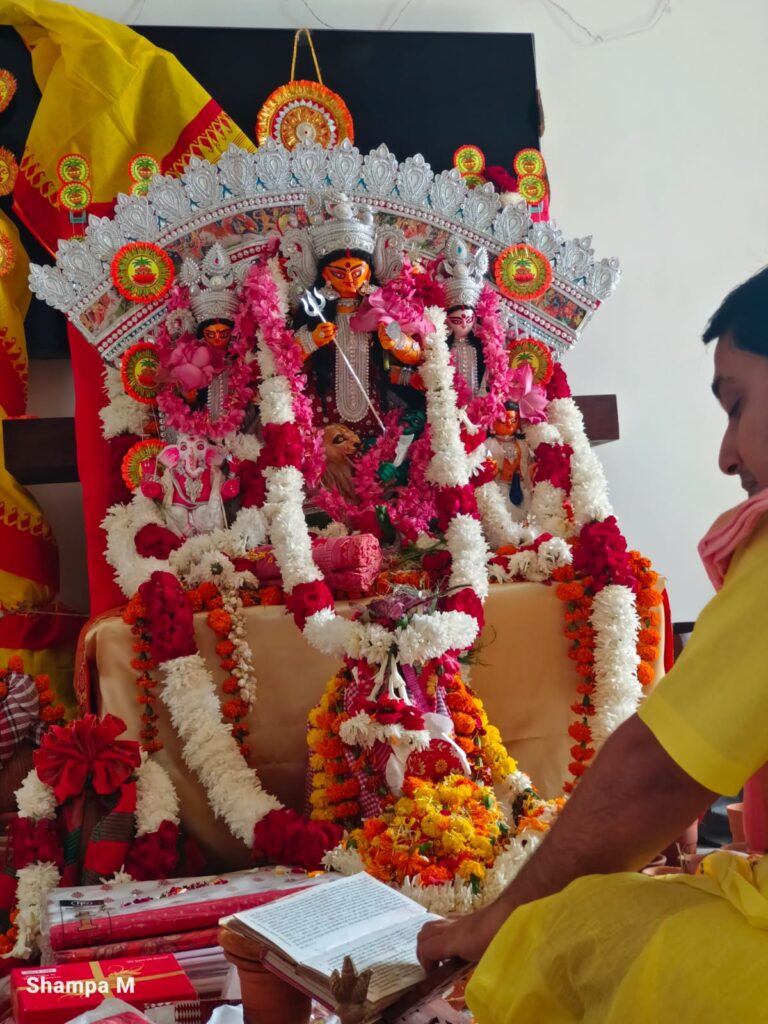
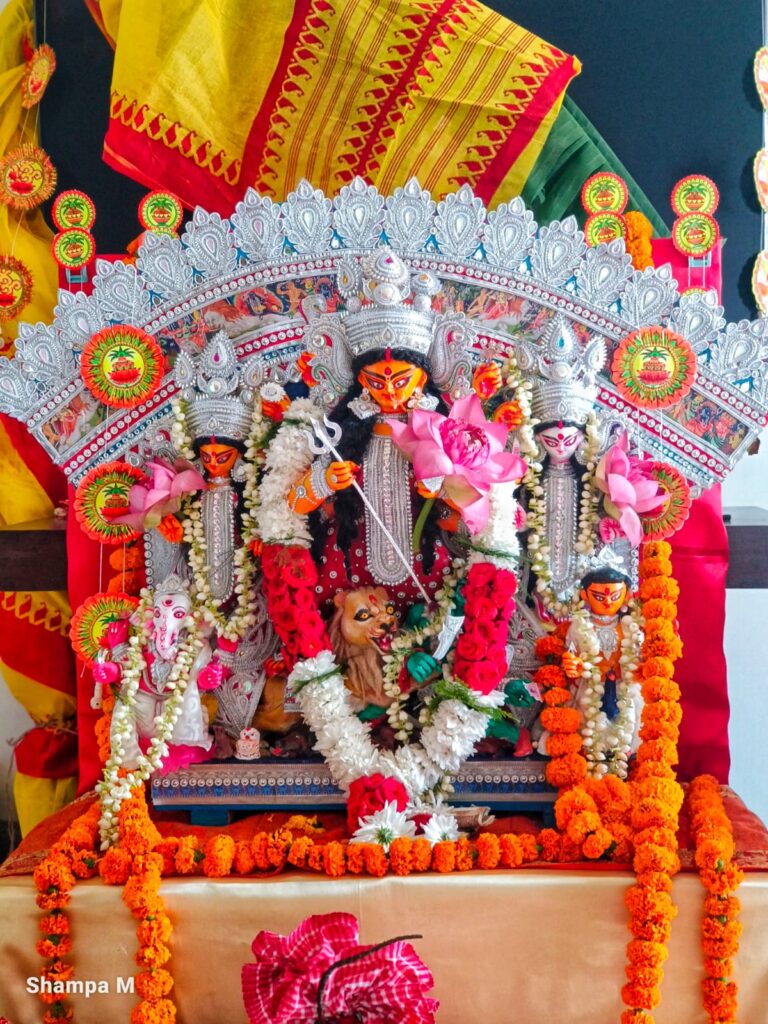



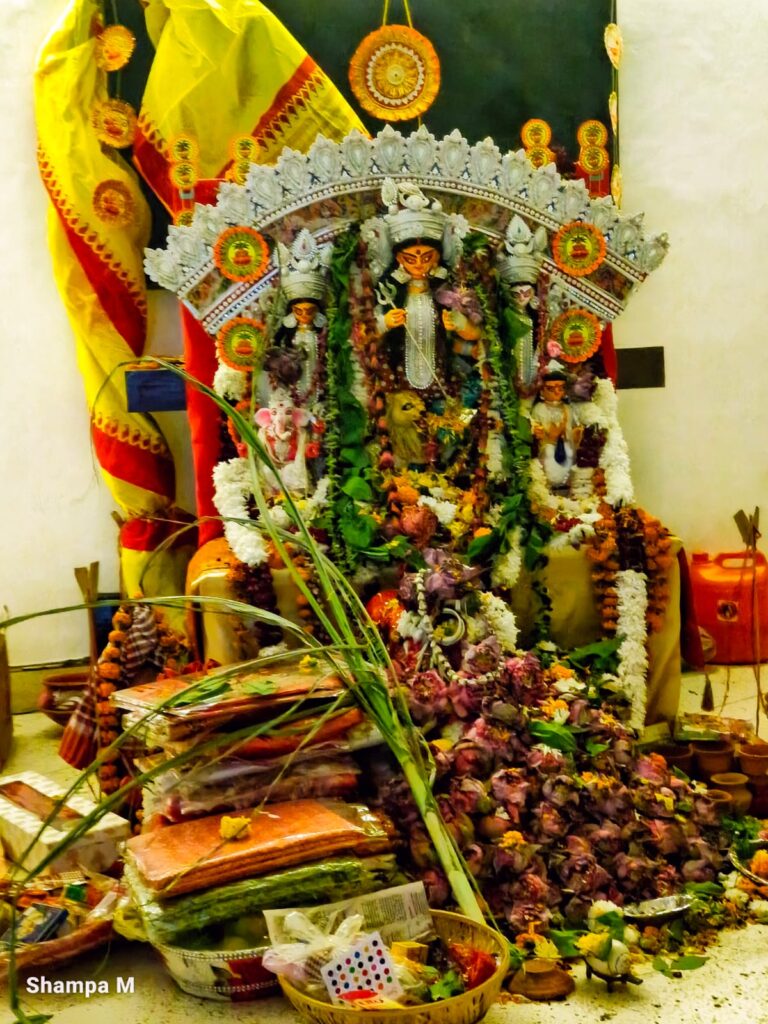

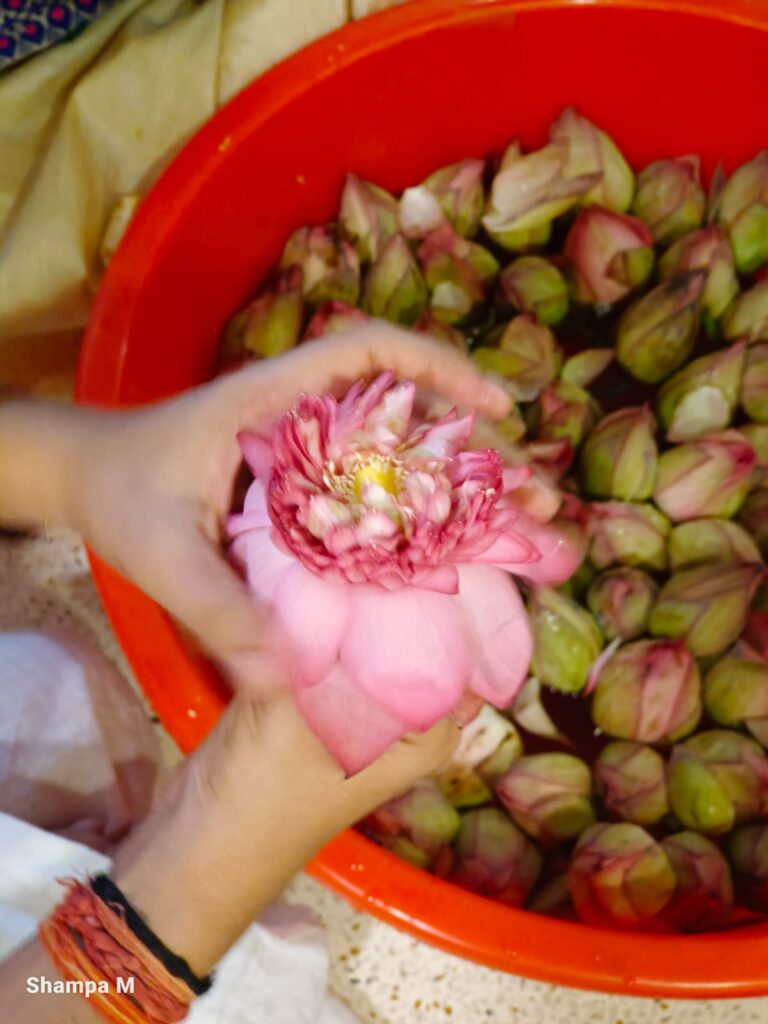

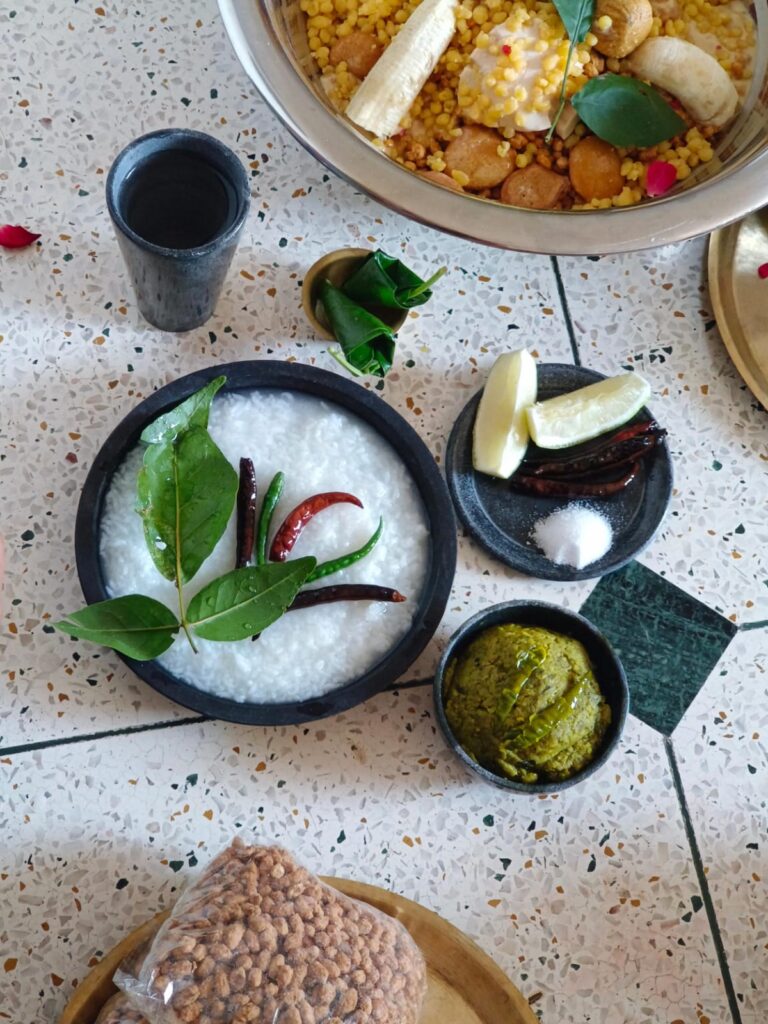

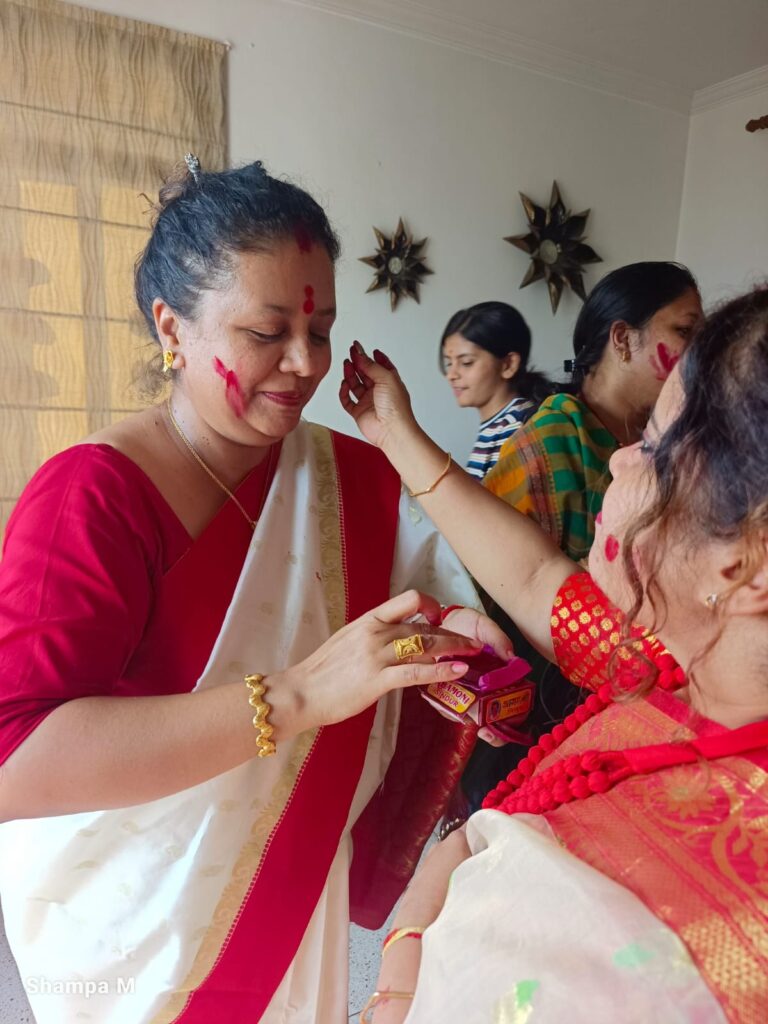

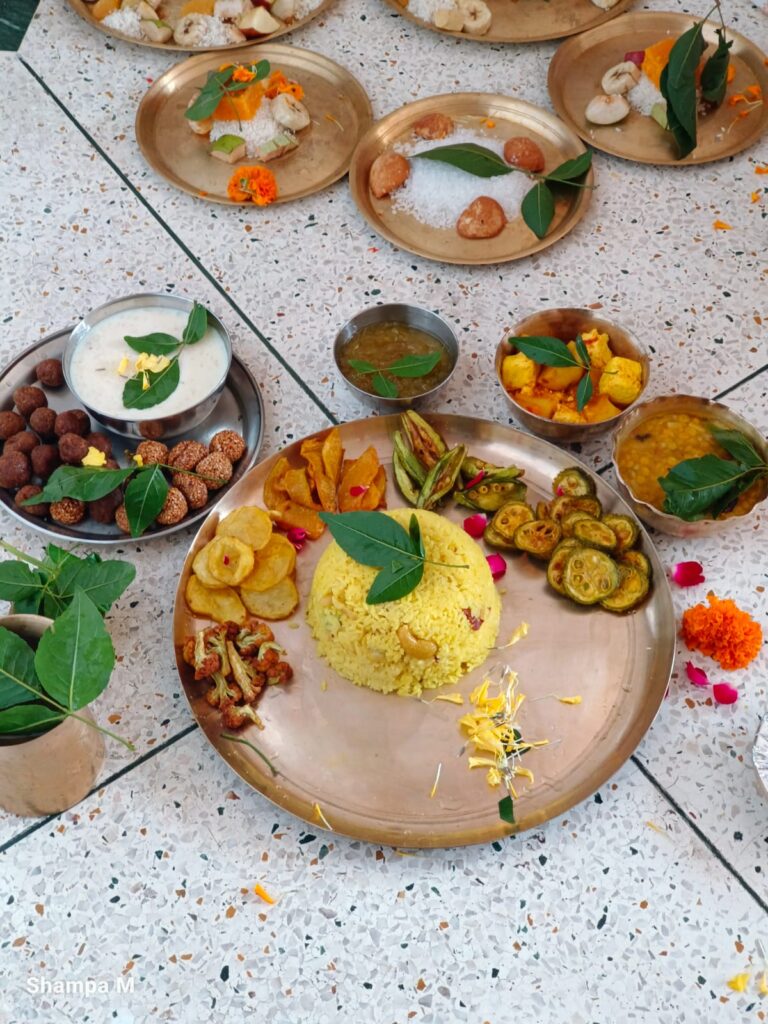

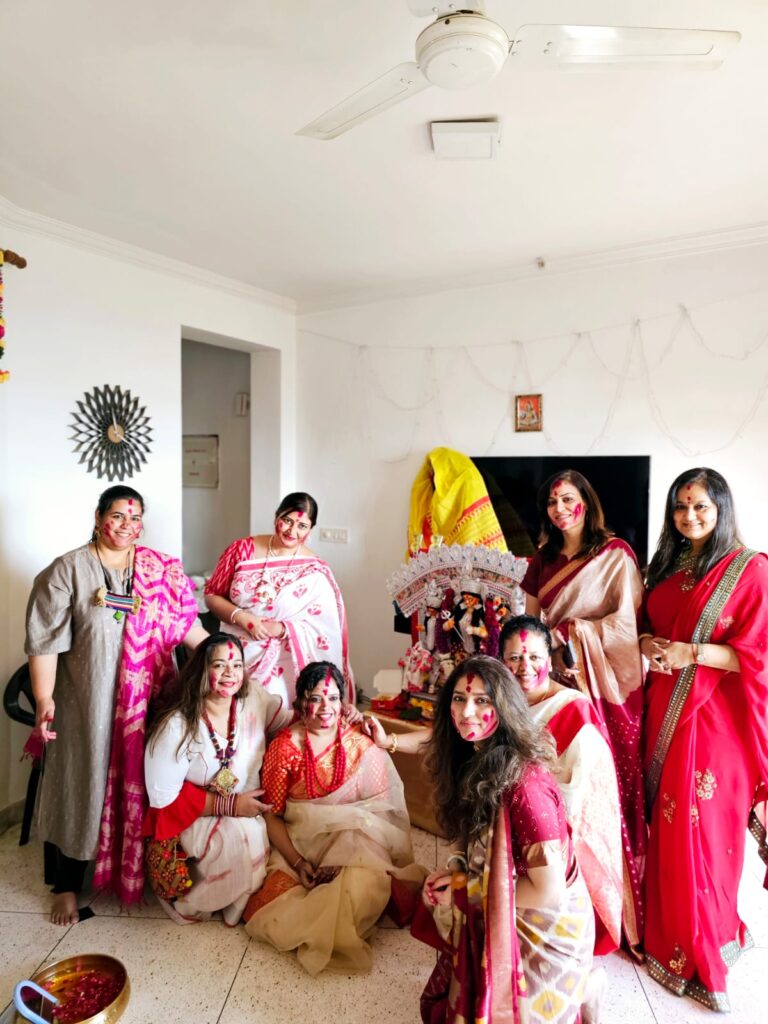

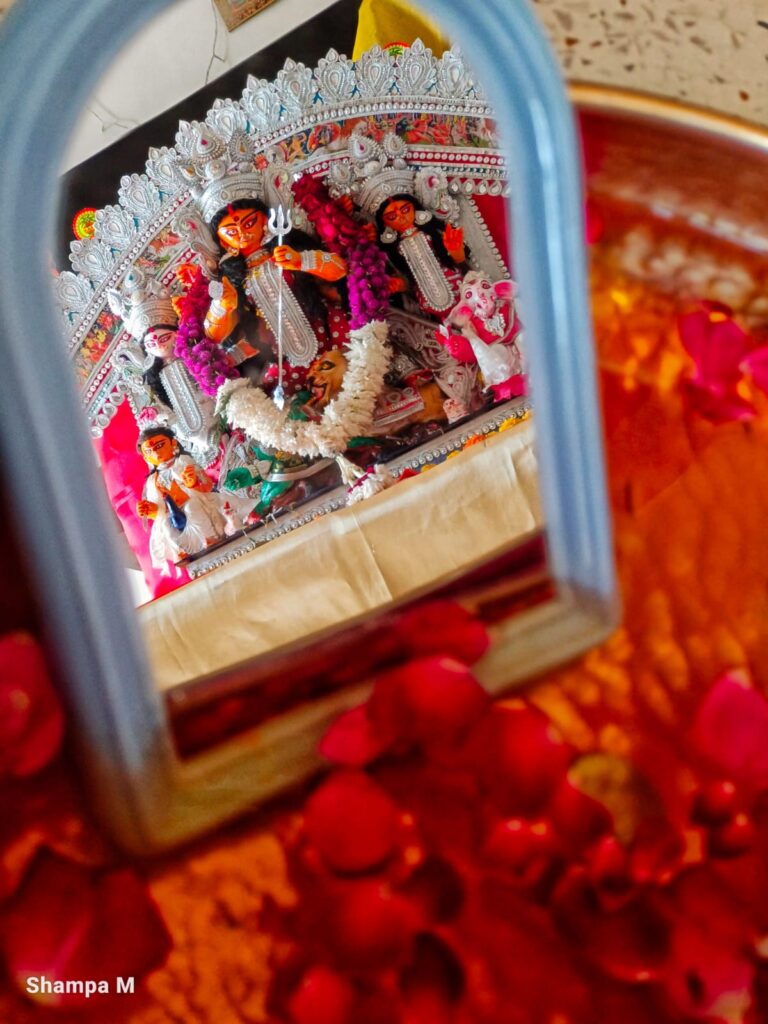





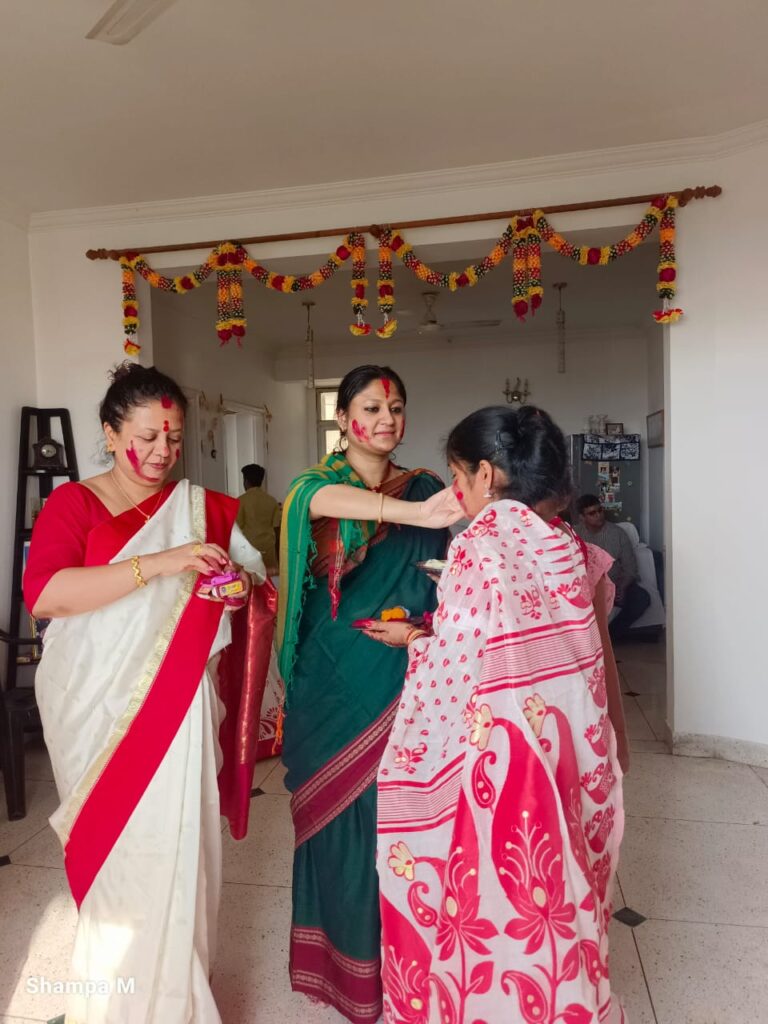

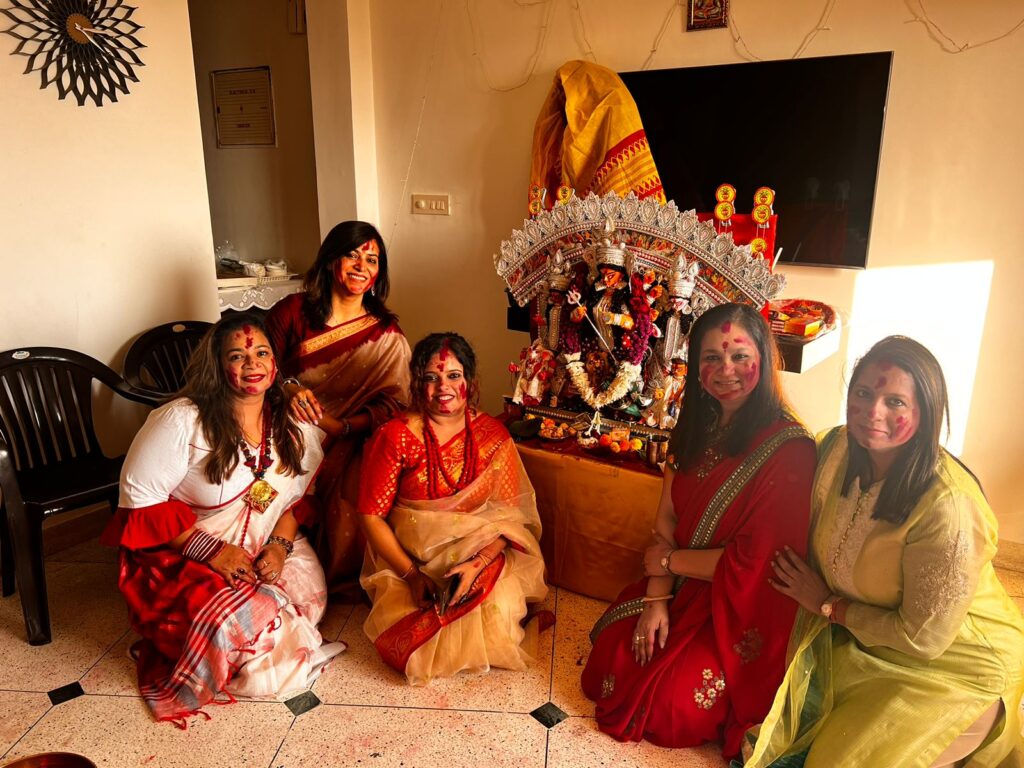

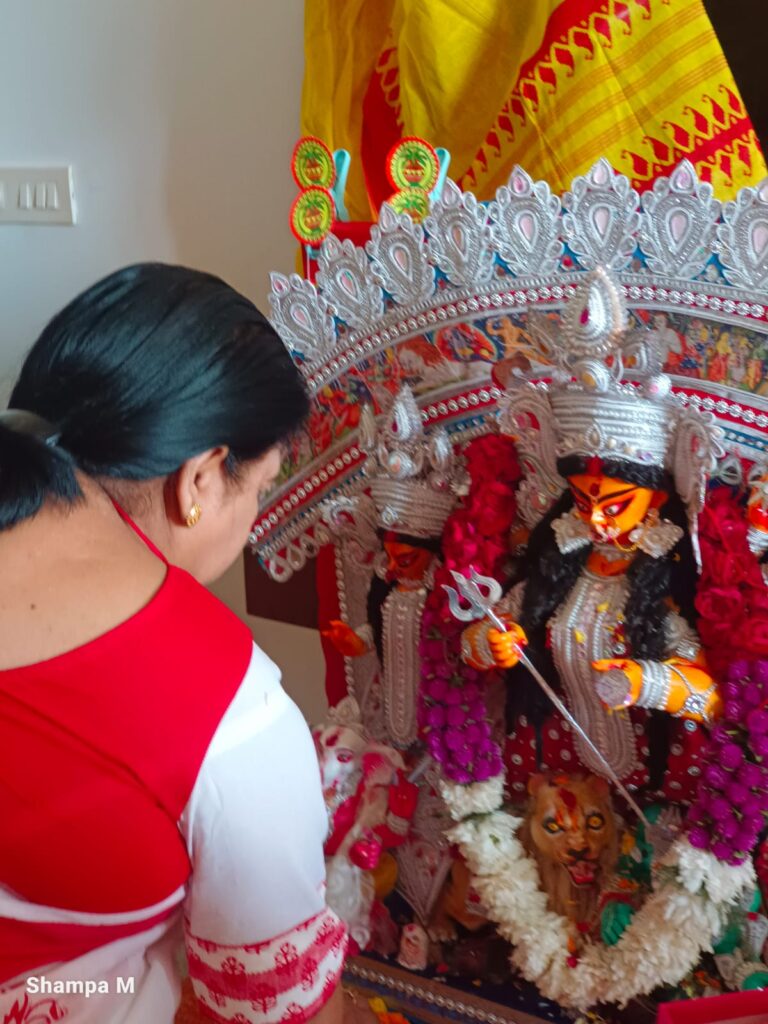





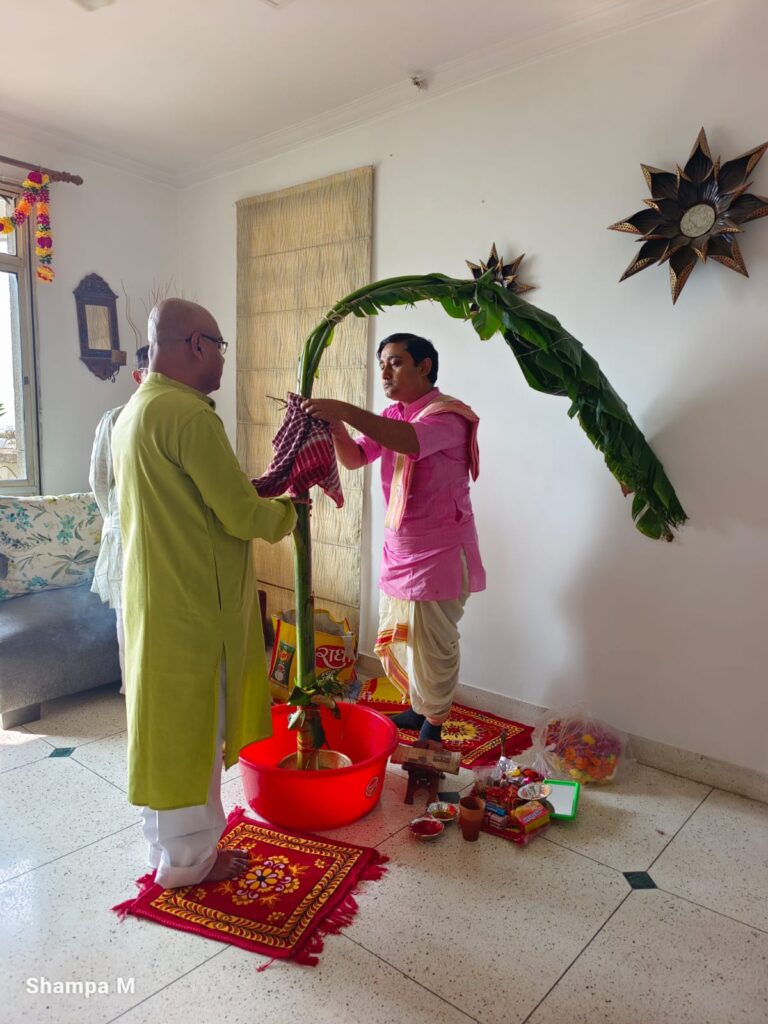

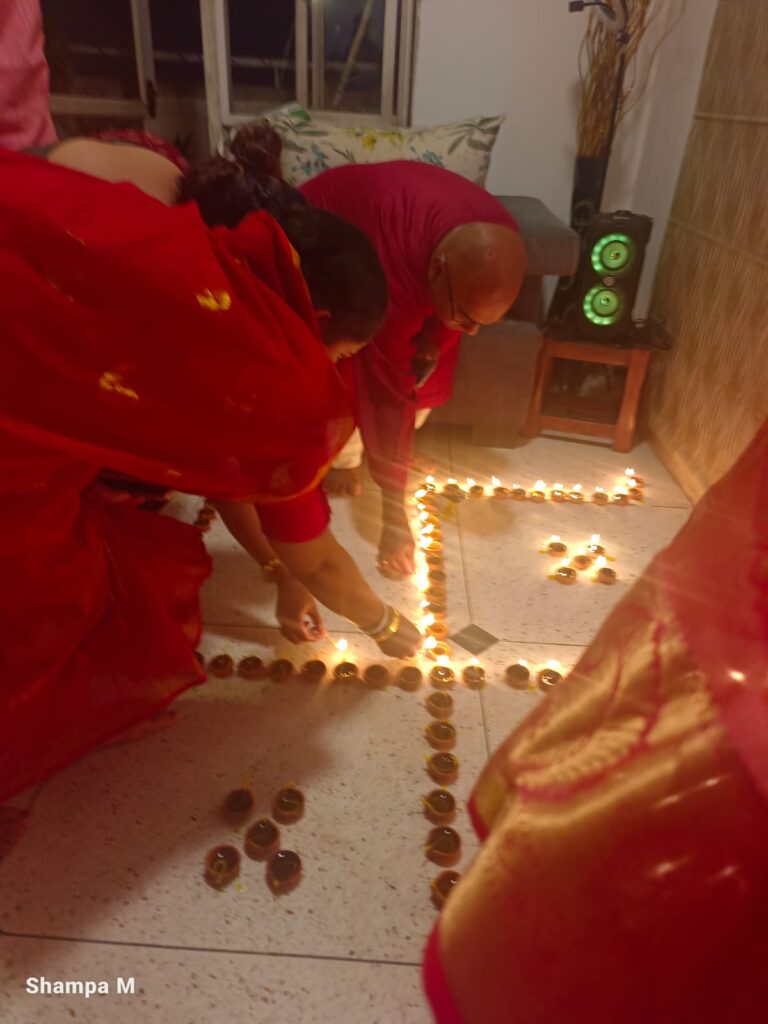

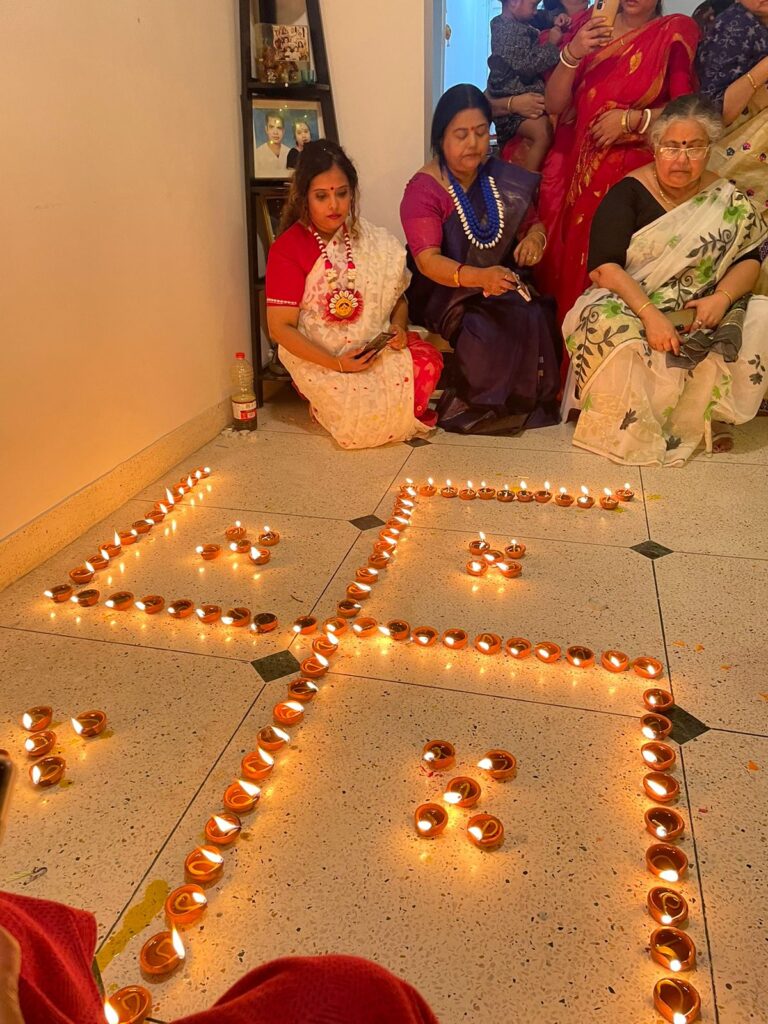



Popular Stories
Football Tournament @Princeton
More Than a Festival: The Art and Power of Durga Puja
Personality of the Month- ‘Dr Usha Mediratta’
Stray Cattle Menace In Front of Galleria
The Chronicles of Malibu Towne: A Mosquito’s Tale
“Senior Living Is Not An Old Age Home” say Mr & Mrs Bose
Recent Stories from Nearby
- Town Hall Meeting With Parmila Tokas December 27, 2024
- GSCHB Society HostsA Delightful Musical Evening December 27, 2024
- Vasant Vihar Club Hosts An Enchanting Concert By Meghna December 27, 2024
- BI-Annual Line Dance Event December 27, 2024
- New Arrivals At The Club Library December 27, 2024


